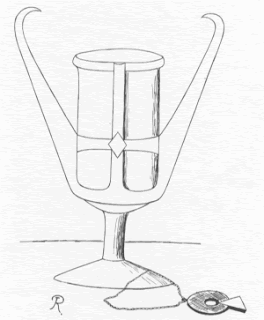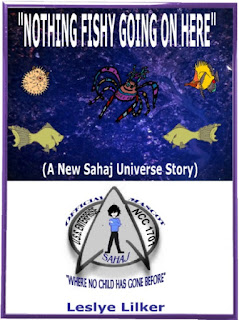Marketing Fiction in a Changing World
Part 18
Amazon Makes Some Bad Marketing Decisions
by
Jacqueline Lichtenberg
Part 18
Amazon Makes Some Bad Marketing Decisions
by
Jacqueline Lichtenberg
Amazon has a rule against writers "reviewing" books by other writers.
I'm an Amazon Vine reviewer, and a writer, and of course I know a lot of writers on Facebook, Twitter, etc. It's almost impossible for me to read a book by anyone who isn't a friend, friend of a friend, member of one or another writer's group -- somehow connected online.
Amazon's snoops can find those connections.
So they assume I'm just shilling for my friends' books.
Well, a lot of beginning, self-publishing writers do get their friends to post 5-star reviews, so they can amass 500 5-star reviews to brag about.
But guess what? If you know a person and are friends with them, if you LIKE a person, chances are very good you will indeed like the books or stories they write -- even if they aren't very well written, but just great stories that thrill your bones.
That is the nature of fiction. Fiction transmits from the subconscious of the writer to the subconscious of the reader -- when there is some sort of harmony of the notes between you, you LIKE each other's fiction.
I've spent a lot of time on this Alien Romance blog talking about writing craft, and how the writers' perspective on "headlines" and especially politics, and social movements, is vastly different from the perspective someone just living in our civilization experiences.
Writers see the universe as differently as Graphic artists do.
Writers experience reading fiction differently than non-writers do.'
You know you're a writer when you have lost all enjoyment from reading books, and then all of a sudden find yourself enjoying books again, but seeing something totally different.
Writers enjoy well crafted stories that shine with artistic brilliance.
Non-writers never get to experience that brilliance full on.
CAUTION: there are people, readers, who have never written or never published a story, who are nevertheless writers in this sense. They see, and revel in, the technical craftsmanship of novels. Many such people end up working as editors. Even more are professional reviewers, librarians, teachers, and personal friends with lots of published writers.
So production of stories in text format is not the criterion I use, but it is the criterion that Amazon seems to use to purge the comments on a novel of any really useful information you might want before you buy a book.
If you're a professional writer, editor, publisher, etc. Amazon doesn't want you to inform the public about the brilliance or the flaws in a work someone might want to buy.'
But as it happens, the ONLY people capable of both enjoying a friend's works and judging that work objectively enough to inform a general reader are the very people Amazon prohibits from performing that service.'
In other words, Amazon has made a very bad marketing decision.
On the other hand, Amazon does own Goodreads.com, where writers and readers can interact.
So there is method to their madness, but it does not serve the general fiction reader browsing for something to read.
One of the most informative bits of information a prospective book buyer can have is a list of which other writers this new writer is friends with. Who hangs out with whom. Which new writers have been inspired by the writers you grew up loving most?
The generational hand-off of traditions in writing is one thing Librarians taught me to look for, when I was learning to browse a public library.
So today, I'm giving you a book series by a writing student I started on a long and varied career who is now garnering top awards attention.
Here is what I wrote on Facebook (back in February 2016) about the third book in his award winning series:
---------quote-------
Here is Book 3 in a Series that is garnering vast amounts of Award attention, and with good reason. It's about a human polymath from Earth who because of a labyrinth of political machinations ends up leading a First Contact and First Deep Contact mission into a well populated (and war-torn) Galaxy.
The worldbuilding is detailed, the space-war-armament development superlative, the aliens suitably strange and amazing (and mysterious), and I'm smitten with the portrayal of a polymath at work. Anything more I might say could be "spoilers" for some, so take a good look at this novel and dive right in. It's easily readable even if you haven't read the previous ones.
This series is getting Nebula attention. In some ways it reminds me of Cj Cherryh 's galaxy-building visions, or Janeen O'Kerry - in fact the galactic history building in Janeen's series on THE SALIK WARS and THEIRS NOT TO REASON WHY is similar, though Janeen is known for her Romance novels.
I can only wonder if Robert J. Sawyer has read this whole series. In a way, the concept reminds me of Jack McDevitt with overtones of Jack Campbell Taylor Anderson - Author of The Destroyermen carrying on in the tradition of Keith Laumer and Poul Anderson.
So far the series is not a Romance, and does not feature a Love Story -- BUT Caine as a character is one grand hunk, and like Spock will become a focus for many Romance style stories.
http://www.amazon.com/Raising-Caine-Riordan-Charles-Gannon/dp/1476780935/
---------end quote----
You will note that is Book 3 -- there is a 4th coming soon -- and if you have been following my series on Worldbuilding, you will find the Caine Riordan series extremely interesting.
Now, to an example of what kind of information Amazon wants to deprive shoppers of.
Here below is a comment made on Facebook by Charles Gannon after reading the anthology of stories written by writers other than Jean Lorrah and I -- contributing new characters and new angles to the Sime~Gen Universe.
Here is the book I gave him a copy of in exchange for a copy of his Raising Caine --- a common practice among writers, severely frowned upon by Amazon.
---------from Charles E. Gannon --------
If you are a fan of series and universes that unfold themselves over the course of multiple books and stories, creating a world in which you get immersed, then you need to be aware of this if you are not already:
The Sime-Gen series launched by Jacqueline Lichtenberg. Intrigue, exploration, adventure, house politics, and under it all, much larger, lurking questions of where different societies are able to find synergy--and where they are likely to tumble into devastating conflict.
Does this sound like a paid-for advertisement? Well, in one sense it is...because, you see, I have a debt to (gladly, joyously) repay that I will never be done repaying: Jacqueline Lichtenberg, for reasons I will never fully understand, took me under her writing wing when I was 12 years old. The attention and enthusiasm she lavished on those early efforts of mine was nothing short of Herculean. In a file cabinet not more than 25 yards from where I sit writing this, I have her first 7 pg (single space, Corolla type-written) critique of a story that was, maybe, about 80 % as long as her critique.
I knew at that moment what good fortune had descended upon me in the form of her mentorship. Or so I thought: until you actually are working in this field, you cannot fully appreciate the way a good mentor's initial lessons keep paying dividends, kept showing up to guide you like a footman's lantern down the better path.
It was also only later on that I fully realized what an extraordinary craftsperson she is, and how far-sighted her vision was of attempting to tell a story across a variety of media, over time: an exercise in world-building that preceded the gaming industry's discovery of just how many ways you can sell world-expansion and development products that create a total narrative in which the once-focal adventure products become small specific events that subtly push the warp and woof of the much bigger world-tapestry that has been created.
So, as advertisements go, this one sucks. It's too long, too personal, too gushing...yeah. I know all that. I worked in advertising. But you won't forget it--and that's the point. Because until you go and see what I'm talking about in the form of Jacqueline's extraordinary Sime-Gen saga, you won't know the extraordinary voice and vision that gave rise to this long paean of praise.
So: go here--and find out what I'm talking about.
http://amazon.com/author/jacquelinelichtenberg
And here's the Amazon page that is your gateway into this incredible world:
http://www.amazon.com/s/?ie=UTF8&keywords=sime%2Fgen&tag=googhydr-20&index=aps&hvadid=75077217077&hvpos=1t1&hvexid&hvnetw=g&hvrand=446465704877823808&hvpone&hvptwo&hvqmt=b&hvdev=c&ref=pd_sl_5unxioq485_b
The newest entry in the Sime-Gen series Fear and Courage is at the bottom of the page, and features some of the other many persons who Jacqueline has mentored, who have brought the voices she helped them find and refine back to this wonderful world in order to expand it even more.
Don't miss out.
------end quote-------
So you see, tracing the connections among writers can give you an amazing amount of information about whether you will enjoy a book or not -- all having little or nothing to do with the blurb on the book, the content, story description, spoilers, or other readers saying "I liked it" or "It was a page-turner."
As a beginning writer, cultivate connections with writers whose work you admire. I learned from the generation previous to me. It is a long-long tradition going back to cave dwelling days and stories around camp fires. We are bards.
Here is a permalink to Chuck's post on Facebook. Glance through the comments for mentions of other writers his fans read.
https://www.facebook.com/chuck.gannon.01/posts/10205509232271667/
And here is a permalink to my Facebook post about RAISING CAINE so you can see the comments there.
https://www.facebook.com/jacqueline.lichtenberg/posts/10153341607837548/
It turns out I made a mistake picking names from the FB dropdown, and Janeen O'Kerry corrected me, adding Jean Johnson to the list of writers you should check out.
Jacqueline Lichtenberg
http://jacquelinelichtenberg.com













































